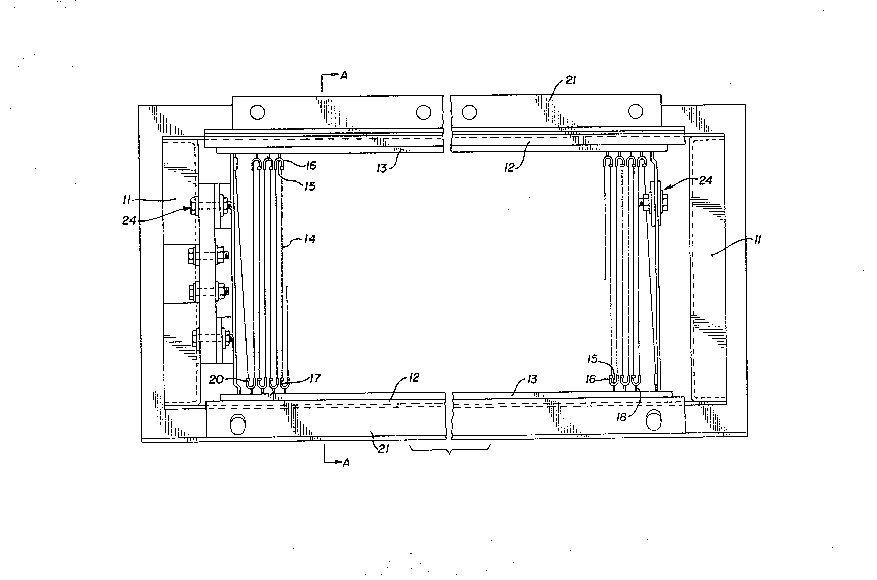Une partie des informations de ce site Web a été fournie par des sources externes. Le gouvernement du Canada n'assume aucune responsabilité concernant la précision, l'actualité ou la fiabilité des informations fournies par les sources externes. Les utilisateurs qui désirent employer cette information devraient consulter directement la source des informations. Le contenu fourni par les sources externes n'est pas assujetti aux exigences sur les langues officielles, la protection des renseignements personnels et l'accessibilité.
L'apparition de différences dans le texte et l'image des Revendications et de l'Abrégé dépend du moment auquel le document est publié. Les textes des Revendications et de l'Abrégé sont affichés :
| (12) Demande de brevet: | (11) CA 2034183 |
|---|---|
| (54) Titre français: | RESISTANCE GAUFREE ET FENDUE |
| (54) Titre anglais: | EMBOSSED AND LANCED RESISTOR STRUCTURE |
| Statut: | Réputée abandonnée et au-delà du délai pour le rétablissement - en attente de la réponse à l’avis de communication rejetée |
| (51) Classification internationale des brevets (CIB): |
|
|---|---|
| (72) Inventeurs : |
|
| (73) Titulaires : |
|
| (71) Demandeurs : |
|
| (74) Agent: | SMART & BIGGAR LP |
| (74) Co-agent: | |
| (45) Délivré: | |
| (22) Date de dépôt: | 1991-01-15 |
| (41) Mise à la disponibilité du public: | 1991-07-17 |
| Requête d'examen: | 1991-07-31 |
| Licence disponible: | S.O. |
| Cédé au domaine public: | S.O. |
| (25) Langue des documents déposés: | Anglais |
| Traité de coopération en matière de brevets (PCT): | Non |
|---|
| (30) Données de priorité de la demande: | ||||||
|---|---|---|---|---|---|---|
|
-9-
ABSTRACT:
A resistor grid for dynamic braking and the like
has a fan-folded strip of resistance material mounted in
a frame. The strip is embossed longitudinally so as to
stiffen it between folds or loops and lanced or slit
longitudinally between embossments from fold to fold but
not around folds. A wide strip so embossed and lanced is
less prone to sag and distort than multiple
conventionally embossed narrow strips.
Note : Les revendications sont présentées dans la langue officielle dans laquelle elles ont été soumises.
Note : Les descriptions sont présentées dans la langue officielle dans laquelle elles ont été soumises.

2024-08-01 : Dans le cadre de la transition vers les Brevets de nouvelle génération (BNG), la base de données sur les brevets canadiens (BDBC) contient désormais un Historique d'événement plus détaillé, qui reproduit le Journal des événements de notre nouvelle solution interne.
Veuillez noter que les événements débutant par « Inactive : » se réfèrent à des événements qui ne sont plus utilisés dans notre nouvelle solution interne.
Pour une meilleure compréhension de l'état de la demande ou brevet qui figure sur cette page, la rubrique Mise en garde , et les descriptions de Brevet , Historique d'événement , Taxes périodiques et Historique des paiements devraient être consultées.
| Description | Date |
|---|---|
| Le délai pour l'annulation est expiré | 1993-07-17 |
| Demande non rétablie avant l'échéance | 1993-07-17 |
| Réputée abandonnée - omission de répondre à un avis sur les taxes pour le maintien en état | 1993-01-15 |
| Inactive : Demande ad hoc documentée | 1993-01-15 |
| Toutes les exigences pour l'examen - jugée conforme | 1991-07-31 |
| Exigences pour une requête d'examen - jugée conforme | 1991-07-31 |
| Demande publiée (accessible au public) | 1991-07-17 |
| Date d'abandonnement | Raison | Date de rétablissement |
|---|---|---|
| 1993-01-15 |
Les titulaires actuels et antérieures au dossier sont affichés en ordre alphabétique.
| Titulaires actuels au dossier |
|---|
| MOSEBACH MANUFACTURING COMPANY |
| Titulaires antérieures au dossier |
|---|
| ROBERT CUMMINS |
| VICTOR V. KIRILLOFF |
| WILLIAM A. BENSON |